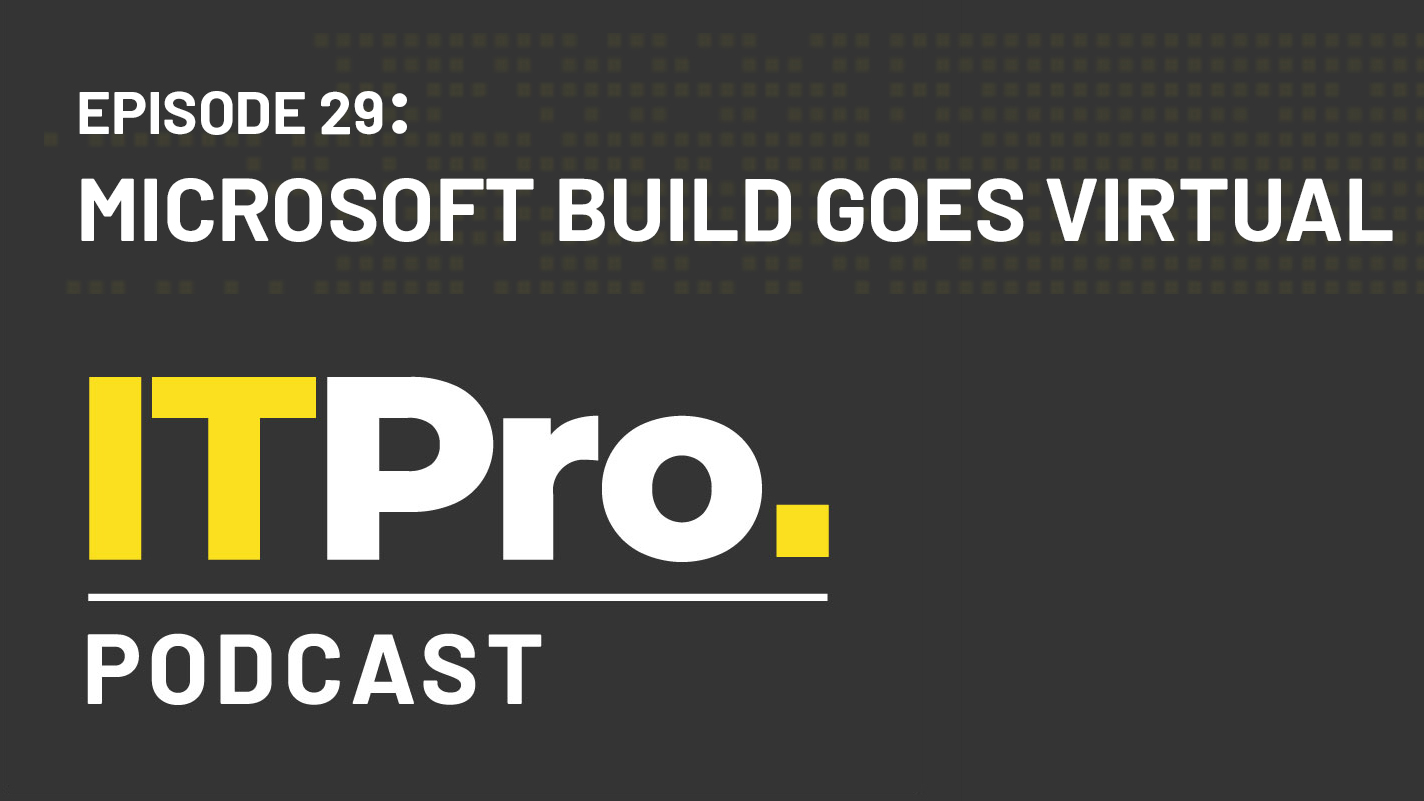How to host a successful virtual conference
Businesses share their insights, experiences, dos and don’ts as they pivoted from physical to digital events


It feels like a lifetime ago since Mobile World Congress (MWC), one of the biggest events on the tech calendar, was cancelled just as the coronavirus crisis was beginning to escalate. Winding forward to the present day, the prospect of any large events of its stature taking place is unthinkable, with companies either postponing or cancelling their own.
Many have instead pivoted to hosting their events digitally, trialling ways to engage partners and customers online. This also applies to IT Pro with the launch of IT Pro Live, a five-day programme of keynote addresses, panel discussions and Q&As held between 22 and 26 June. Of course, hosting a virtual event is very different from hosting a physical one and even the most experienced of event managers face pitfalls. In this spirit, we’ve compiled guidance for businesses hoping to launch their own virtual events over the coming weeks, months or even years.
Not a like-for-like replacement
Hosting a digital event is an arena ripe for experimentation. Microsoft, for example, launched more than 50 products at its first virtual Build conference, which, like IT Pro Live, took place over the course of a week. Google Cloud Next 2020, on the other hand, will be hosted one day per week for nine weeks, starting 14 July. As such, it’s clear that virtual events can’t be treated as a like-for-like replacement for in-person conferences.
“The challenge is that such conferences are multi-faceted events that are hard to deliver through a virtual window,” nCipher vice president, Peter Carlisle, tells IT Pro. In Carlisle’s experience, certain elements of a physical conference can’t be replicated, which may prove challenging. These vary from sharing stories in casual settings like over a meal, to soaking in the buzz generated by thousands of attendees darting around a conference floor. The cyber security firm adopted a different format for its recent virtual Sales Kick-Off, delivering content daily across nine consecutive business days. Sessions ran 60 to 90 minutes, with three of four topics delivered in pieces averaging 20 minutes each.
There are, however, benefits to hosting virtual events, according to Imperial College Business School’s conference manager, Megan Taylor-Silva. The university recently hosted its fifth annual Imperial Business Conference online, focussing on sustainability, and inviting speakers from Sainsbury’s, Microsoft, Google and BlackRock.
“Gone are the days where bad catering or a gate crasher can ruin your event,” explains Taylor-Silva. “Instead of spending time on choosing the right gluten-free muffin, you’ll have more time to spend on perfecting your event content, building relationships with your speakers, and converting registrants.”
Putting the building blocks in place
Planning is perhaps the most crucial element. One of the biggest mistakes companies can make, explains Virtual Event Company founder and CEO, John Saunders, is not appreciating the difference between planning for a virtual and physical event – with different timescales, disciplines and technologies involved.
Get the ITPro daily newsletter
Sign up today and you will receive a free copy of our Future Focus 2025 report - the leading guidance on AI, cybersecurity and other IT challenges as per 700+ senior executives
“More often than not, companies have committed to a software they don’t know the full capabilities of, therefore, allowing enough time to plan for your event is critical. During this planning period, it’s critical that the technology and the Wi-Fi strength are tested to avoid poor sound or other issues on the day,” he says. “Speakers should be coached on how to engage with people online and address their audience through a camera. It’s a different skill to physical stage events and practising online before the big event is important to ensure engagement is achieved.”
It’s important to test the systems, run experiments and trial different scenarios. Lining up backup options should things go wrong would also ensure seamless continuity should a worst-case scenario come to fruition. Before the systems are even in place, it’s also key to ensure your organisation uses the right technology. It may, therefore, be useful to look at what your competitors are using, and what your attendees are familiar with, Imperial College Business School’s Taylor-Silva adds. This is in addition to making sure these systems work with the company’s existing platforms.
“Don’t assume that everyone is comfortable with technology,” she elaborates. “Briefing speakers ahead of time and ensuring they know how to use your event platform is incredibly important. Make sure that speakers have a stable internet connection and a good microphone, this could make or break your event.”
Systems and software
From video conferencing to streaming services organisations can adopt a variety of platforms. John Saunders’ Virtual Event Company, for example, recently launched its digital hub for businesses to plan and host digital events, even fitted with Second Life-esque 3D rendering. While buying into flashy platforms might appeal to many, in Saunders’ experience, not fully understanding the technologies being used is a common pitfall.
“As companies navigate this new world by way of new tech solutions, they may choose a platform that doesn’t resonate with their brand or audience, or choose one that doesn’t look professional in the interests of cost,” he tells IT Pro. “Taking time to research the best digital solution for your event is key.”
RELATED RESOURCE

The IT Pro Podcast: Microsoft Build goes virtual
We dig into some of the most important announcements from this year’s show
Database performance platform Percona, for instance, used a variety of simple platforms for its 24-hour virtual event last month, after plans to host Percona Live Austin 2020 fell through. Zoom was used as the main hosting platform to allow organisers to stream directly to attendees, while the event was also live-streamed to YouTube, Twitch and Facebook Live. Workplace collaboration platform Slack was repurposed to serve as a central point of contact for conference-goers.
For Percona’s global events manager, Bronwyn Campbell, the key to success was to keep it simple. “By not over complicating things with fancy broadcasting solutions or too many streaming options,” she explains in a blog post, “it allowed us to make it easier to manage, yet very effective and with a broad reach”.
Catering for the occasion
The experience will differ vastly from that of attending an in-person event, not just in the way that content is consumed, but when. Hosting an event online means you can much more easily cater for audiences from across the world, but this means ensuring your event is as accessible as possible. IT Pro Live, for example, will be broadcast between 1:30pm and 6:30pm BST, which also coincides with the working day in Europe, the Middle East, and most of the Americas. The incorporation of on-demand sessions also means people can access the content as and when it suits them.
Database company Redis Labs hosted its annual RedisConf conference virtually this year, with the company boasting four times the average number of attendees. The company’s CMO, Howard Ting, explains that the experience has given Redis a flavour for what kinds of events work better online, and what might not necessarily translate well to a virtual format.
“Your event is now more accessible as it’s available to attendees across the globe without the burden of travel,” Ting tells IT Pro. “Along with that, your speaker pool just expanded. We also found that virtual events were cheaper overall to run, since you aren’t managing a venue and hotels.”
“We found that attendees appreciated live interview formats that were a little unstructured, like fireside chats. The organic conversations that happened in these interviews drove engagement because they felt more authentic and personal,” he elaborates. “Another tool to maintain interest is to stagger content drops throughout the day or make various elements available at different times – for example, we made training sessions available only on the second day, but dropped them at the previous evening so attendees in India could access them during their morning.”
One of the key challenges, having got your event off the ground, is to sustain interest among conference-goers throughout the programme. After all, it’s much easier to disconnect and switch off than if you’ve booked flights, hotel rooms, and have to physically walk between conference sessions.
Organisers can boost engagement in several ways, from regular polls to Q&As. One of the key methods Imperial’s Taylor-Silva pitched was to ensure that speakers address the audience throughout the event, and acknowledge their presence. Organisers may also consider appointing a visible event host who guides attendees throughout the day, offering them an element of consistency, while also giving producers a single point of contact to liaise with for time-keeping purposes.
Redis Labs’ Howard Ting, meanwhile, devised an alternative approach, with the company building a gamification system that rewarded engagement. “Those who attended more sessions, asked more questions, and visited more areas in the environment were rewarded. We had small Easter Eggs throughout the conference that added to the depth of the event; for instance, we tied the environment to the attendee’s local time, so if attendees were visiting during their evening the environment transformed to dark mode.”
Minor pitfalls might be unavoidable
Hosting a successful virtual event won’t be easy for any company to pull off, particularly given the variance in structuring, content styles, and even the technologies powering them. It’s also important to bear in mind that the concept will be new to audiences too, so getting things wrong will be forgivable to an extent.
This is a period of trial-and-error for many, and there will inevitably be things you wish you could’ve done differently after the fact. Percona’s Bronwyn Campbell, for example, says she wishes her event featured shorter talks in some instances, and kept to a single track of events as opposed to a complex multitrack programme, as it runs the risk of audience dropoff, while making things more difficult to manage. Nevertheless, the key for any organisation will lie in rigorous planning, sufficient testing of underlying technologies, and devising ways to keep audiences engaged throughout the duration of the agenda.
IT Pro Live will take place across five days from 22 to 26 June, featuring an array of panel sessions, Q&As, and roundtables. You can check out the agenda and register for your free ticket now.

Keumars Afifi-Sabet is a writer and editor that specialises in public sector, cyber security, and cloud computing. He first joined ITPro as a staff writer in April 2018 and eventually became its Features Editor. Although a regular contributor to other tech sites in the past, these days you will find Keumars on LiveScience, where he runs its Technology section.
-
 Bigger salaries, more burnout: Is the CISO role in crisis?
Bigger salaries, more burnout: Is the CISO role in crisis?In-depth CISOs are more stressed than ever before – but why is this and what can be done?
By Kate O'Flaherty Published
-
 Cheap cyber crime kits can be bought on the dark web for less than $25
Cheap cyber crime kits can be bought on the dark web for less than $25News Research from NordVPN shows phishing kits are now widely available on the dark web and via messaging apps like Telegram, and are often selling for less than $25.
By Emma Woollacott Published